~ 10 ~
~ The Study of Threes ~
http://threesology.org
Researchers as of 8/29/2019
| Devil's Advocate Series: | ||||||||
|---|---|---|---|---|---|---|---|---|
| 1 | 2 | 3 | 4 | 5 | 6 | 7 | 8 | 9 |
| 10 | 11 | 12 | 13 | 14A 14B |
15 | 16 | 17 | 18 |
| 19 | 20 | 21 | 22A 22B |
23 | 24 | 25 | 26 | 27 |
| 28 | 29 | 30 A | 30 B | 31 | 32 | 33a | 33b | 33c |
| 34 | 35 | 36 | 37 | 38 | 39 | 40 | 41 A | 41 B |
On page 9 in this Devil's Advocate series, I gave mention of the "2/3 pattern" which should be elaborated on a bit. I do so with a few examples on this page, one of which that can be included is the three-digit arrangement of fingers and toes coupled to the five fingers, as well as the three divisions of the upper and lower (arm and leg) extremities.
The "Two-Three" theme crops up in a variety of ways as well as multiple variations with a recurrence which suggests it is non-random, though it does not at present appear to present us with a sequential appearance as dictated by a conventional number line. One such representation is found in the recurring 3'— 5' ends seen as a structural formula in DNA, and thus acts as a pattern by which human thinking is like-wise tethered to in many instances, because believed-in "natural" laws directs the thinking of many a person who do not often care to straddle the boundaries of consideration because to do so, their insecurities find a way to denigrate alternative suppositions, such as for example in converting the "and" in the sentence 3' "and" 5' ends into a mathematical word problem and substituting it with words such as equal, minus, multiply, divide, congruent to, ratio, proportion, in absence of... etc., thereby rendering us with the occasion of different number values such as 2, 8, 15, .6, etc... It is an intellectual game mathematicians and numerologists may be inclined to exercise, but not those who are overly anxious to be mirror-images of information in order to acquire some assumed position of advocating accepted knowledge that may afford them with an opportunity to apply the knowledge in order to secure an income.
Please note that the 3' and 5' designations is but one way in which the following information can be labeled. Alternative perceptions can lead to focusing on one or another pattern. In other words, it is an arbitrarily contrived labeling system used as a repetitive reference and should not be deduced as the most definitive nor most valuable when a larger assortment of examples is taken into consideration from different subjects. The "3'/5'" criteria is simply that which has become adopted as a standard reference... but is not meant to suggest it is the best when larger selections of information are compiled to ascertain the larger compendium of a cognitive profile.
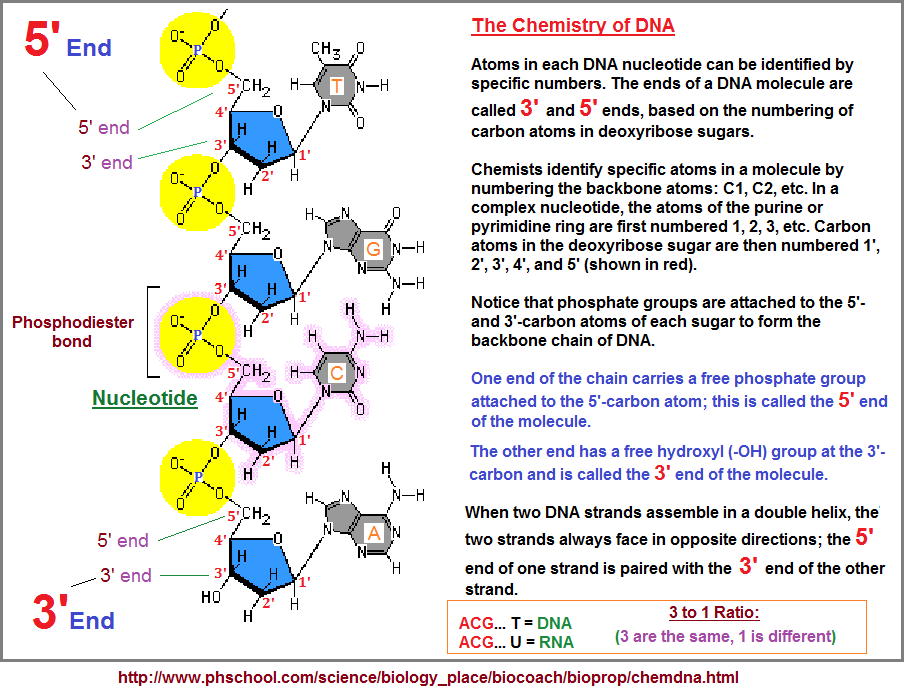
One must make note that low number values are being used, just as they are in many biologically significant processes, as well as in orientations involving business, politics and religion. Yet, the expression "3 and 2" or "2 and 3" (which can be mathematically found in the 3' and 5' grouping... even if nature does not come right out and express it in the thinking conventions used by humans), needs to be further explored for a bit in order to show the reader that it is not an anomaly of occurrence. First, let us look at the presently used organizational (geometric naming) format of chemical isomerization and make note of that the convention of using the common descriptives Cis and Trans need to be updated to include the "EZ" referencing system (also named after the three contributing chemists [Robert Sidney Cahn, Christopher Kelk Ingold, and Vladimir Prelog] who took part in the development of standardizing a process used in organic chemistry to completely and unequivocally name a stereoisomer of a molecule): Cahn–Ingold–Prelog priority rulesbecause the two-patterned Cis and Trans methodology does not always work:
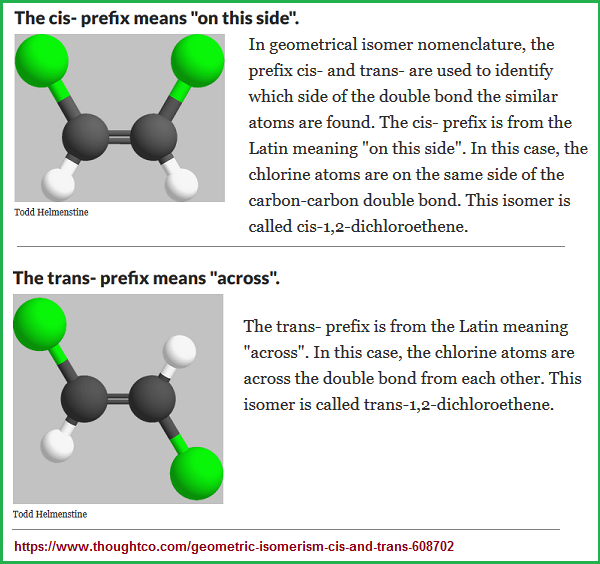
The usage of three introductory video references pertaining 1st to the Cis and Trans orientation in stereo-chemistry and then 2ndly and 3rdly to the EZ methodology is an arbitrary arrangement set into place for the present context. If I were focusing on patterns=of-four, I might well use four examples. The third (EZ) type of geometry ranking involves ranking atoms by their atomic number and not the mass nor size of the group. In other words, when the commonly referenced two-patterned "Cis and Trans" fails to provide other than a generalized accommodation the usage of a three-patterned technique is more applicable. The 1st short video is described as 'how to rank groups using the Cahn-Ingold-Prelog notation". The second video is a more pointed reference to the EZ system:
The EZ naming protocol is as follows:
- Each carbon in the pi bond is attached to two substituents. For each carbon, these two substituents are ranked (1 or 2) according to the atomic numbers of the atom directly attached to the carbon. (e.g. Cl → F )
- If both substituents ranked 1 are on the same side of the pi bond, the bond is given the descriptor Z (short for German Zusammen, which means "together").
- If both substituents ranked 1 are on the opposite side of the pi bond, the bond is given the descriptor E (short for German Entgegen, which means "opposite").
Cis and Trans Isomers | |
| Cis Trans and E Z Geometric Isomers September 18, 2016... by Leah4sci | |
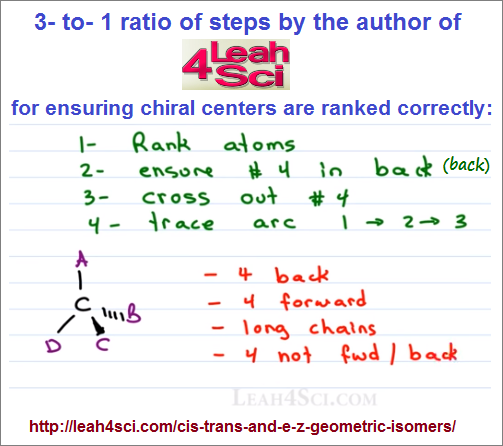
References to Isomer and Isomerization:
- Science Direct: Isomerization is defined as the transformation of a molecule into a different isomer, and it can adopt two distinct conformations: cis (meaning on this side) or trans (meaning across, or the other side.
- Google search definition
- Chemistry: each of two or more compounds with the same formula but a different arrangement of atoms in the molecule and different properties.
- Physics: each of two or more atomic nuclei that have the same atomic number and the same mass number but different energy states.
- Wikipedia: IsomerizationIn chemistry isomerization is the process by which one molecule is transformed into another molecule which has exactly the same atoms, but the atoms have a different arrangement e.g. A-B-C → B-A-C (these related molecules are known as isomers). In some molecules and under some conditions, isomerization occurs spontaneously. Many isomers are roughly equal in bond energy, and so exist in roughly equal amounts, provided that they can inter-convert somewhat freely; that is, the energy barrier between the two isomers is not too high. When the isomerization occurs intra-molecularly it is considered a rearrangement reaction.
- Wikipedia: Isomer: In chemistry, isomers are ions or molecules with identical formulas but distinct structures. Isomers do not necessarily share similar properties. Two main forms of isomerism are structural isomerism (or constitutional isomerism) and stereoisomerism (or spatial isomerism).
In the conventional parlance of chemistry, the different types of isomerization are grouped together to produce a quantitative "5". I have taken the information from a generalized guide providing the different types and transformed it into a "3 and 2" profile:
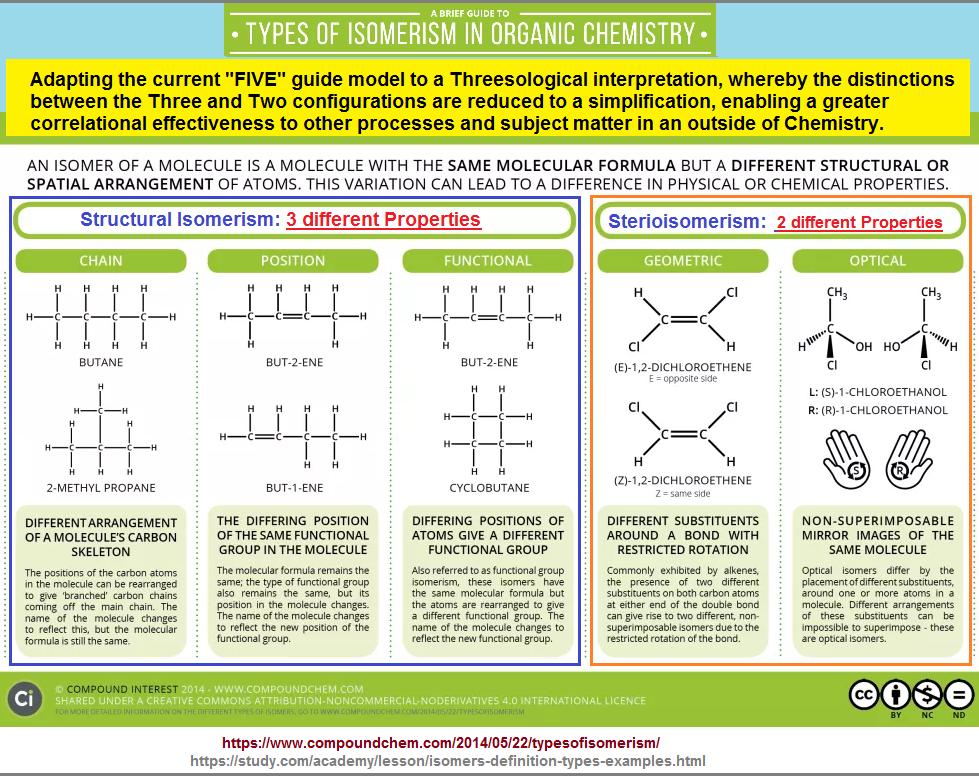
While some may think that the "3 and 2" reference is isolated because I have centered on chemistry, let me bring to mind the reference of a "3 and 2" count in baseball or even (If I am permitted to transgress a bit), the 1- 2- 3 count in basketball points alternatives... leading up to a much larger ensemble of the "3 and 2" reference by noting that the heart and lungs on the right side of the body has (respectively) a tricuspid valve and 3 lobes, while the left side of the heart and lungs (respectively) have a bicuspid (mitral) valve and 2 lobes. I don't know why these two major organs have this "3 and 2" arrangement and not all other body parts which, exhibit a remarkable frequency of displaying a recurrence of:
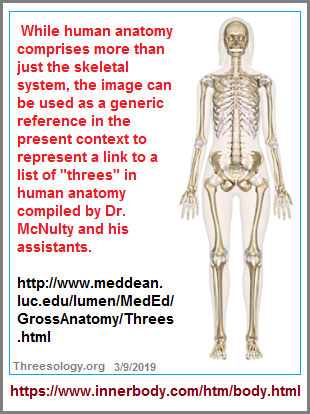
Yet, if we take a look at the brain with respect to identifying presumed attributes of the different hemispheres (to which we can include the reptilian brain as well in the equation), we find that the left brain/hemisphere (affecting the right side of the body as noted in a stroke victim), is particularly "two-patterned" oriented, while the right brain/hemisphere (affecting the left side of the body as noted in a stroke victim), is particularly "three-patterned" oriented:
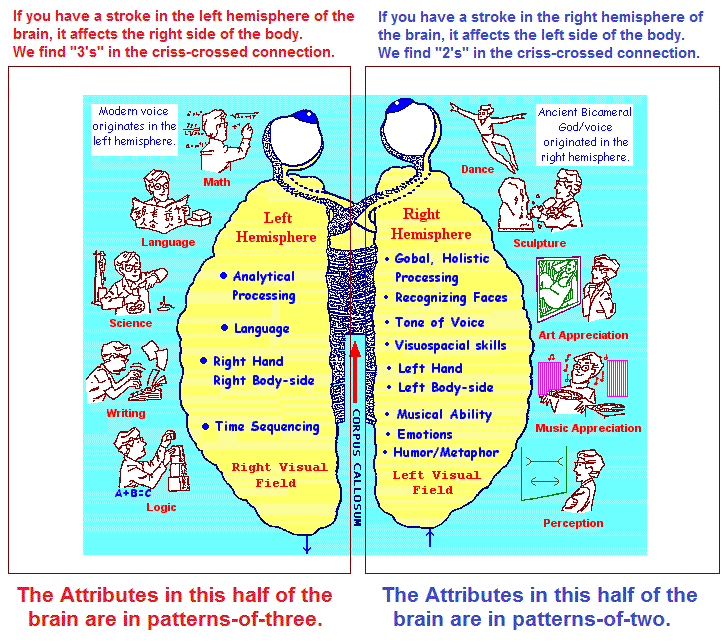
***Note: Much of the brain illustration shown above was adapted from page 106 of Dean Falk's book entitled "Brain Dance," 1992.
When we look at the assigned culturally recognized attributes of the brain, we can see a distinct (over-lapping) 1-patterned, or 2-patterned, or 3-patterned arrangement. (Reminder: when a person gets a stroke in the left hemisphere of the brain it affects the right side of the body, and vice-versa.)
|
Left Hemisphere (Predominantly 3-patterned) Math: Associative Commutative Distributive Logic: Major Premise Minor Premise Conclusion Time Sequencing: Seconds ~ Minutes ~ Hours Past ~ Present ~ Future Day ~ Week ~ Month Language: Subject Object Verb Right Body Side: Tri-cuspid heart valve Three-lobed lung |
Right Hemisphere (Predominantly 2-patterned) Holistic: Macro versus Micro Whole versus Part Inner versus Outer Music: Major Scale vs Minor Scale Loud versus Soft (Quiet) Consonance vs Dissonance Visuospatial: (Art) Background vs Foreground Light vs Dark (Contrasts) 1 Dimension vs 2 Dimensions Emotions: Pain versus Pleasure Positive vs Negative Love versus Hate Left Body Side: Bi-cuspid heart valve Two-lobed lung |
|
(Reptilian) (Predominantly 1-Patterned) (Self)-Preservation~ (Self)-Procreation~ (Self)-Preeminence | |
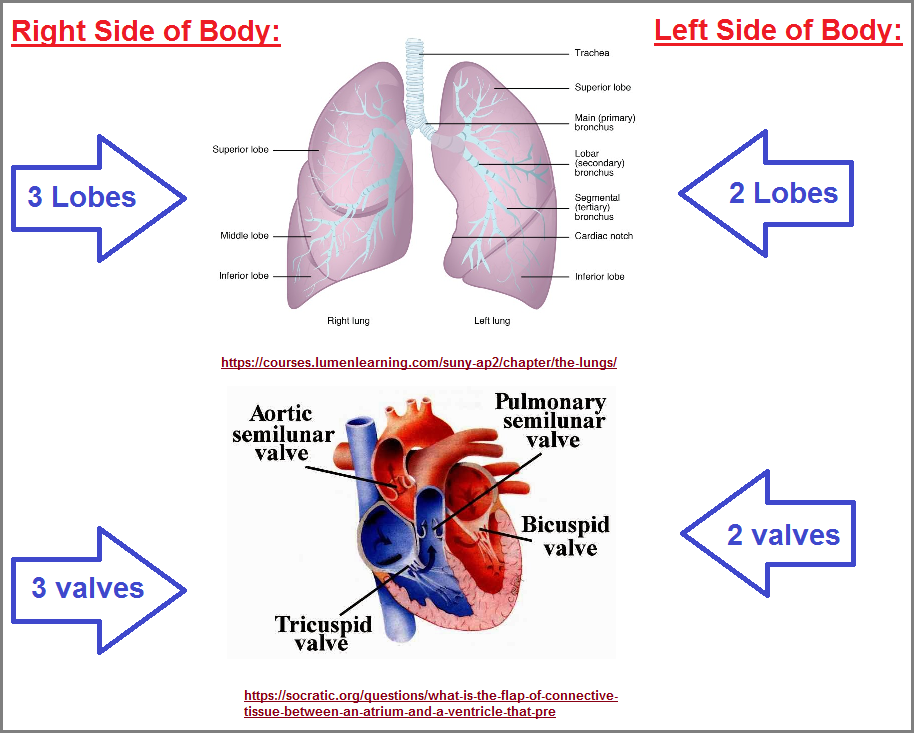
With respect to the aforementioned "two and three" layers interpretations of the cell, can it be that environmental circumstances did at one time create a distinct three-patterned cell membrane or that the structure can advance into multiple more layers but environmental conditions on this incrementally decaying planet creates interruptions? What were the conditions of the early Earth which provide the impetus for the beginning development of a single layer, then a second layer, and afterwards? Whereas we can interpreted a reduces oxygen atmosphere followed by a condition of increased oxygen as a atmospheric layering, so-to-speak, are there other types of layerings (such as displayed in geology) which occurred (and are still occurring?) in the biosphere as a type of layering to effect biological processes? Where do we plot such occurrences on the proposed timeline?
When thinking about timelines as representative illustrations of time travel portraitures, it is well to remember that we must retain the word "primitive" as we move forward in time. It is far too easy for us to set aside the words "primitive" "ancient" "ancestor" as we move forward in time. Yet, we of today are the ancient peoples of the future. We of today will be viewed being just as primitive to those in the future as those in the past are being viewed as primitive to us. Likewise, just because the contents of cells have been brought forward in time through mechanisms of adaptation, replication and evolution does not mean they are not repositories of primitive activity. Indeed, the human body like other animal, insect and plant life forms are primitive containers of different primitive containers within yet other containers, like additional layers of membranes. These different containers thereby retain viable primitive conditions for their citizen-hosts. Each of them in their own way are consumers and then producers who do not always share their accumulated goods and/or services in an equal way through distribution (or redistribution after hoarding). It is a system of economics and political strategy taking place on the genetic, cellular, organ and overall physiological domains. Let us take a look at this "politically applied biological activity" situation for a moment, as a digression which inter-relates with the present topic covering multiple genres of investigation:
- Political ideologies revolve around consumers, producers and distribution of the goods and services of the consumers and producers.
- Some centralizing mechanism (business, government, religion) assumes authority thereby directing distribution(s) on a perceived basis of equality; or engages in activities of particularized redistribution after they have initiated some program/activity of hoarding.
- Business, government and religion are otherwise to be viewed as species that may inhabit separate or overlapping domains which they claim, much in the manner of cellular, organ, and other physiological activities... and will either remain in their respective domains or begin to encroach on other domains and may be called Nationalistic, imperialism, colonialism, disease, cancer, anomaly, outgrowth, etc...
From a perspective of consumption, production and distribution we find there are three overall divisions that can be multiplied if we look at the same situation from a perspective of ecology. Different perspectives tend to increase or decrease the valuations of consideration, promoted by one another justified rationale... but that any larger or smaller collation of considerations does not appreciably alter the content or context simply by using a personally preferred listing of criteria in a supposed attempt to portray oneself as being more conscious of the variables needing to be included in the equation... however crude or distinctively appropriate it may seem to another observer. Vantage point observations do not necessarily assist in our understanding or help to arrive at a more complete solution to an equation or syllogistic representation. Often, vantage point observations offer little more than the application of different colors to the same perspective and do not alter the basic view acknowledged from all angles of perception.
Let me digress for a bit though the digress will straddle the discussion of "threes" in the molecular sphere of biology:
Life provides a marketplace of different producers, consumers and distributions in varying environments. While those life forms in desert terrains may think they are being short-changed by having a reduced supply of goods and services as compared to the inhabitants of forests and jungle terrains, the philosophy of the whole setting of life must be taken into consideration. For example:
|
It is incomprehensible for anyone (such as politicians) to propose that others (such as the citizenry) follow them when they clearly lack an understanding of underlying planetary and biological forces which affect human behavior and are expressed in repeating patterns that are being taken for granted. Current political ideas (and practices) are suffused with a depth of ignorance which is incorrigibly laughable... and requires the sustained maintenance of a populace with the necessary ignorance to perpetuate those institutions rewarded by subsidies which promise to assist in the maintenance and perpetuation thereof. Let us provide a succinct (though extremely truncated) example involving the concept of "Tripartite ideology" applied to politically-directed philosophy, though the ideology in and of itself without a specific application, may be called by alternative names such as Threesology, Threeism, Triunity, etc... Again, the reader should keep in mind that the following is a severely abbreviated analysis meant for easy consumption by a large audience, using a context in which a "threes-patterned" content is manifest in outlining a recurring pattern of thinking which appears to have a biological basis... or so one might be inclined to think in such terms: In an attempt to unravel the reasons for the overall Societal Mess humanity is in and progressively persists in along a course of increasing intertwining complexity due to over-population and a reduction in planetary resources... ...It is necessary to point out a perceived but commonly overlooked repetition which clearly describes a recurring environmentally influenced- biologically manifested mindset of constraints attuned to what appears to be an incrementally deteriorating planetary/environmental occurrence: Let us turn to basic paradigms which can be found in "ZO'ology, and incrementally progresses in translatable forms "up the food-for-thought chain" towards and away from an assemblage of (convergent and divergent... along with a meso-variant "vergency": 'mesovergent') instances... which are sometimes labeled as Phenetics and Cladistics in biological nomenclature (though a central or alternative position of investigation and cataloguing is sometimes presented by some researchers represented by a numerical modeling methodology). Such a food-for-thought-chain of consideration is a form of Cognitive Science involving multiple subject areas such as Biology, Economics, Psychology, Sociology, Political Science, Philosophy, etc., (though there are similar parallels to be found in genetics, chemistry, geology, music, art, architecture, anatomy, and physics). Appropriate to both Biological and Political interests is the study of Consumerism and Production. Therefore, let us begin with the three types of basic Consumers and Producers as seen from the perspective of Zoology and then progress towards other genres of research: Interestingly, the present theme has not nor Is not being taken into consideration (in its present formula) by any type of Political theory which routinely appropriates ideas from economics for argumentative justification for one idea against another perspective involving extremes and some supposed "happy medium" or its presumed alternative counter part laying at some specialized point of reference or future point in time designated as a "to be reached" greater goal often denoted by the ideology found in Communism, Democracy, Socialism and Utopian idealization. Again, let us begin with some basic Zoology:
Note: Trophic models vary from three to five categorizations depending on if they are focused on consumerism/production (3 levels) or ecology (4 or 5 levels. We can often find that algae and plants are primarily described as producers, but they too are consumers. In other words, organisms which produce chlorophyll are also consumers... or they could not produce chlorophyll.  The Zoologically-referenced three types of consumers and producers can subsequently be aligned with the idea of consumption specifically related to animals: We have now moved onto a larger biological context:
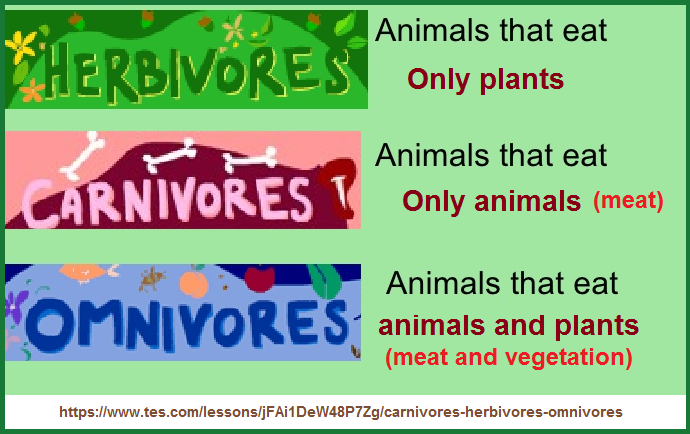 Aside from Production, "Consumption" is a word that can take on a variety of meanings involving the three different types of symbiotic relationships known as:
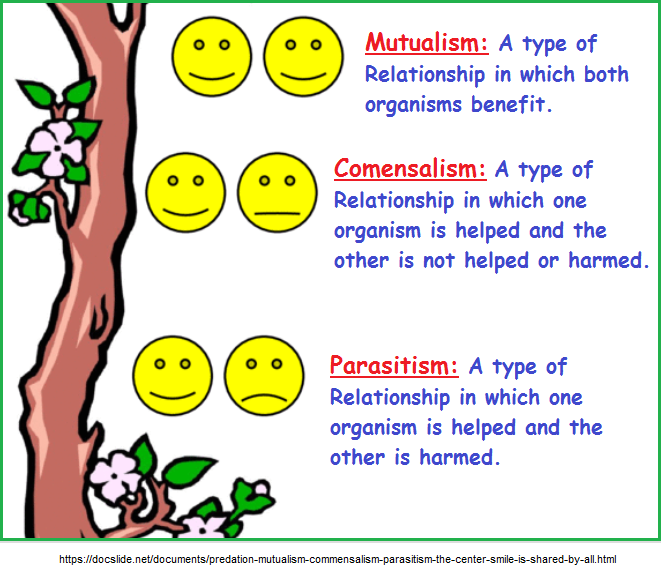 Let us now move on to an instance involving a basic psychology paradigm: The above three can be seen to revolve around the three behavioral responses labeled:
 From psychology let us move on to Sociology and Political Science (though different labels may be used): ...thereby instructively addressing the three complementary ideas known as:
Let us now move into the realm closer to basic philosophy: ...the foregoing three might be interpreted by some readers as three-patterned cognitive parallels related to three-patterned philosophical syllogisms commonly labeled (and used by political philosophers) as:
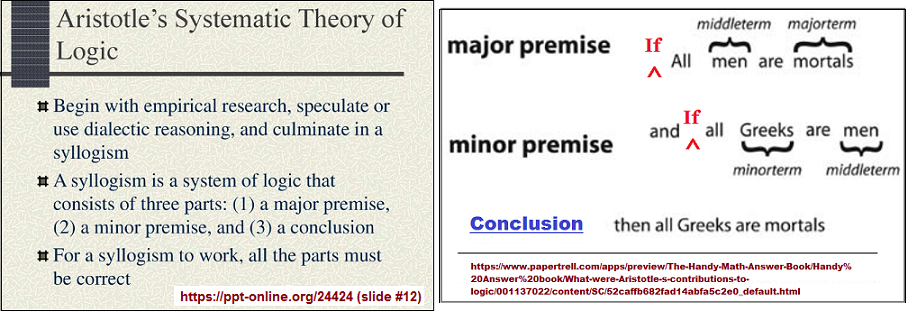 With respect to the syllogism, it is of some interest to note that although it has a long history of usage in comparison to the notion of the three social classes (Upper- Middle- Lower), it has not been transformed into a representation of sub-classifications. For example, one might find the three traditional (Upper- Middle- Lower) social classes listed with a variety of sub-classes but the "Upper" designation is not typically provided with an 'Alter Ego' identity of supremacy as are the lower and middle class listings. Interestingly, although there was ample evidence for Marx and Engles to derive their own variation of a three-level social classification system, Marx set himself in the foreground by stipulating the presence of only two significant classes in the Communist Manifesto called the Bourgeoisie and Proletariat. It is an example of a two-patterned mindset we can contrast with the three-patterned mindset of Weber which may be entitled as the Three-component theory of stratification 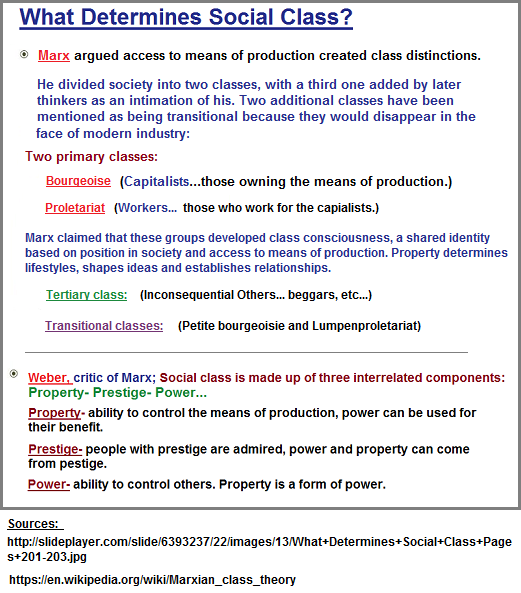 |
Three additional images about social class categorization methodology may be useful for further explanation:
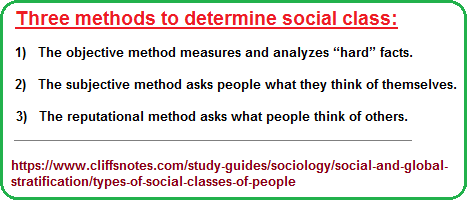 | |
 |
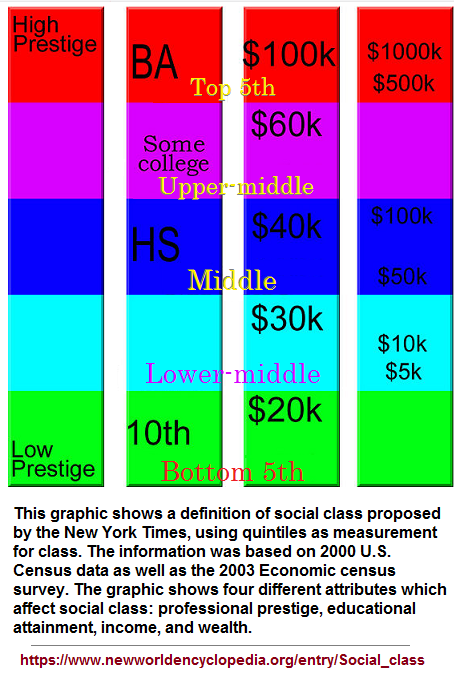 |
Let me provide a short list of social class categories combining different models that use different words which may describe culturally internalized specificities but can nonetheless be used in a generalized or generic way, such as those culled from Karl Marx, Max Weber and:
- The Great British Class Survey of 2013
- Social classes in the US
- India's Caste system... the latter being used as an example by Georges Dunedin in his Tripartite Ideology (Trifunctional Hypothesis) of Indo-European peoples.)
- Brahmins (priestly people)
- Upper Class (Capitalist/Wealthy elite)
- Kshatriyas (also called Rajanyas, who were rulers, administrators and warriors)
- New Money
- Upper (Technical) Middle class
- Lower upper middle class
- Middle class
- Lower middle class
- Vaishyas (artisans, merchants, tradesmen and farmers)
- Traditional working class
- Lower class
- Shudras (labouring classes)
- Working (precarious) class
- Working (emergent service) poor class
- Under (non-working poor) class
- Homeless, moochers, beggars, impoverished class
- Dalit (untouchables), meaning "broken/scattered" in Sanskrit and Hindi, is a term mostly used for the ethnic groups in India that have been kept depressed by subjecting them to untouchability (often termed backward castes).
While the word "Ultra" as in an ultra-class distinction is not specifically used, one might well interpret its usage as a marker of distinction in some cases. As noted, it is interesting to see that the syllogistic reference of Major Premise- Minor Premise- Conclusion has not been subject to either a sub- or ultra-categorization approach, though one might do so... philosophically speaking. However, the lack of such an approach to this methodology of inquiry speaks to the limitations of human cognition being suppressed by a traditional model, and the lack of effort to think creatively otherwise. For example, the usage of ultra and sub categories might look like the following (though I am sure additional levels and branchings)
- Ultra-Major Premise
- Major Premise
- Middle-Major Premise
- Lower- Major Premise
- Ultra-Minor Premise
- Minor Premise
- Middle-Minor Premise
- Lower- Minor Premise
- Ultra-Conclusion
- Conclusion
- Middle-Conclusion
- Lower-Conclusion
On the next page, I shift gears in preparation for turning a corner into another area of consideration of the threes phenomena.
Origination date: Tuesday, September 2nd, 2019... 4:02 AM
Initial Posting: Tuesday, September 2nd, 2019... 9:10
Updated Posting:Tuesday, January 17th, 2023... 12:05 AM
Herb O. Buckland
herbobuckland@hotmail.com